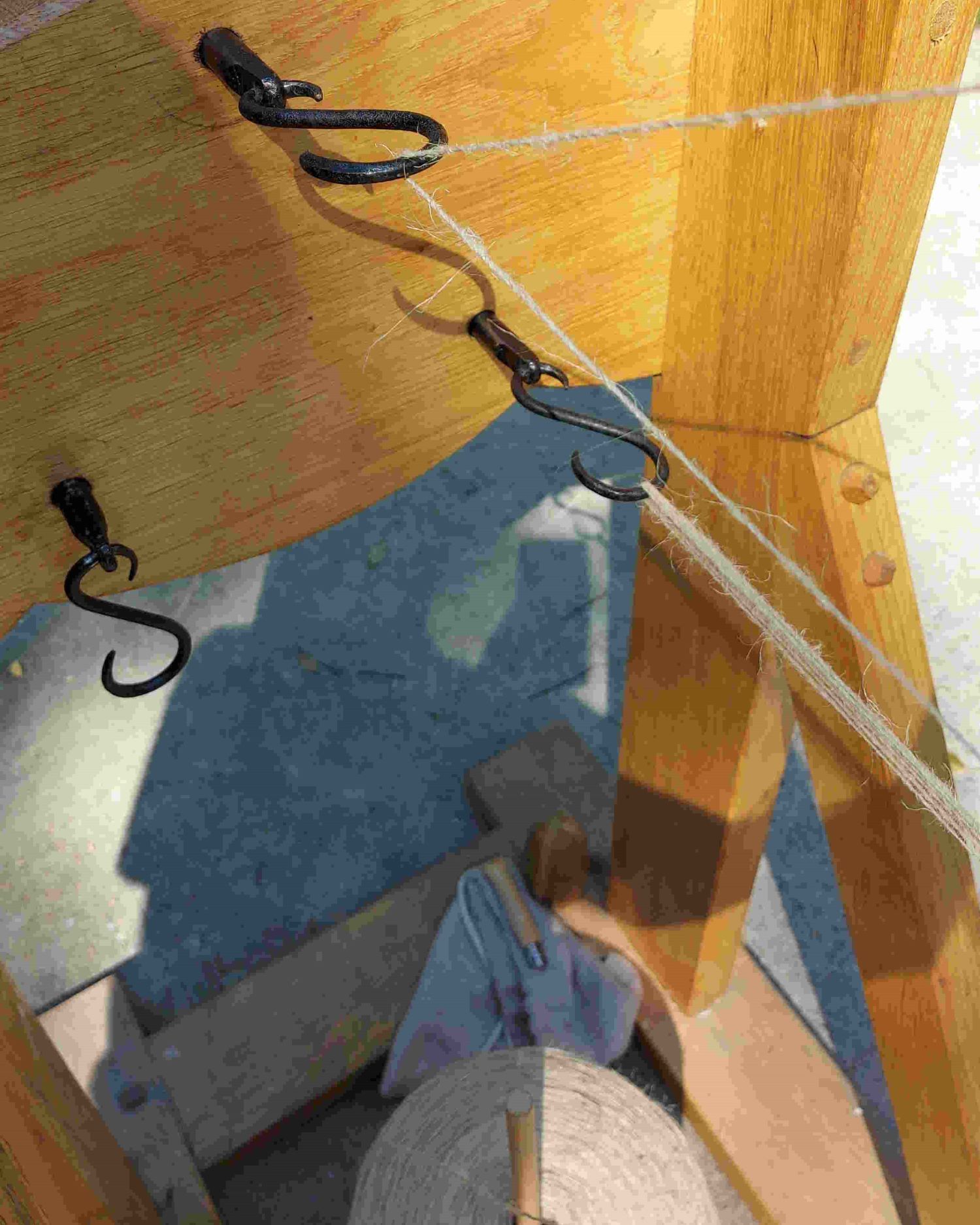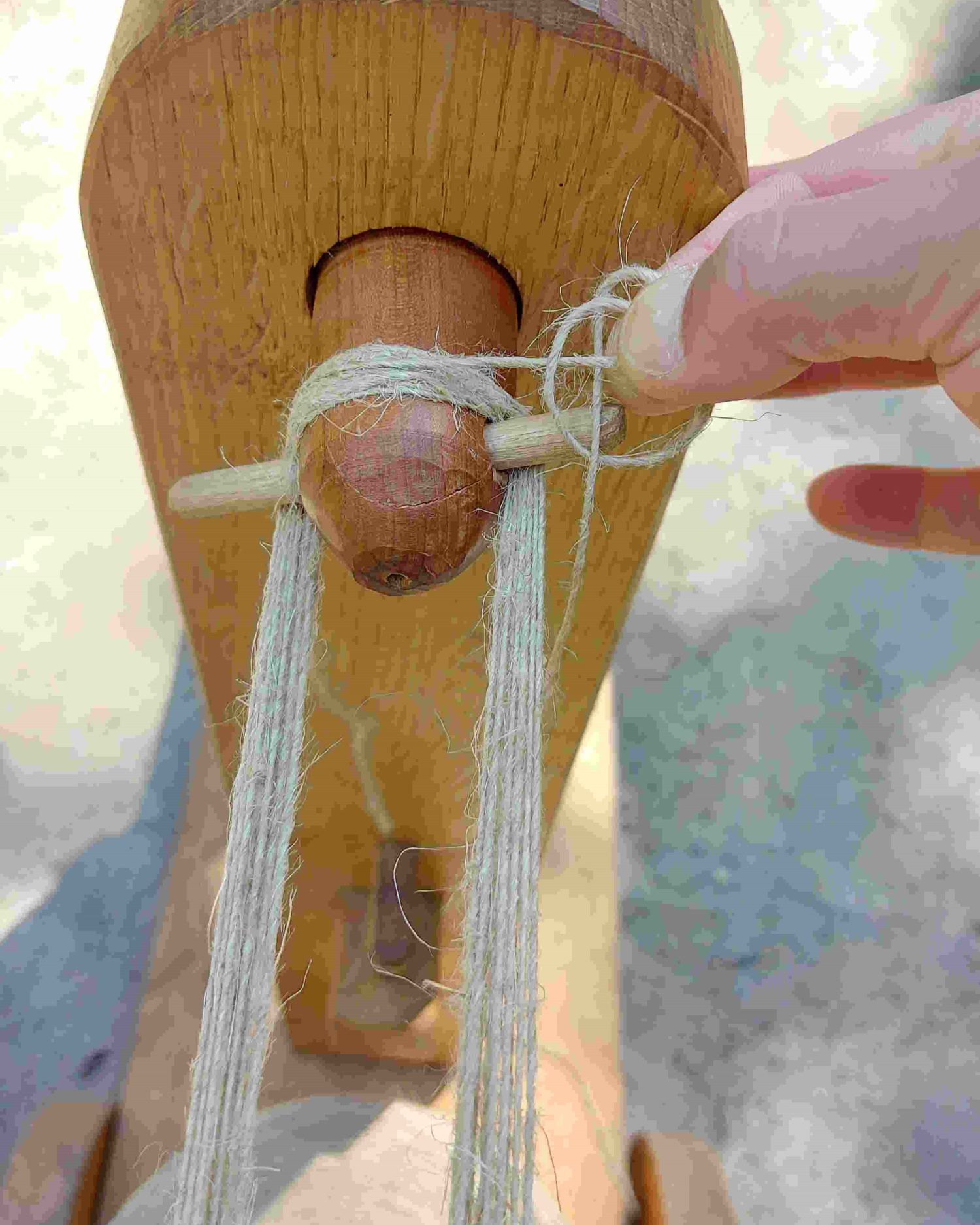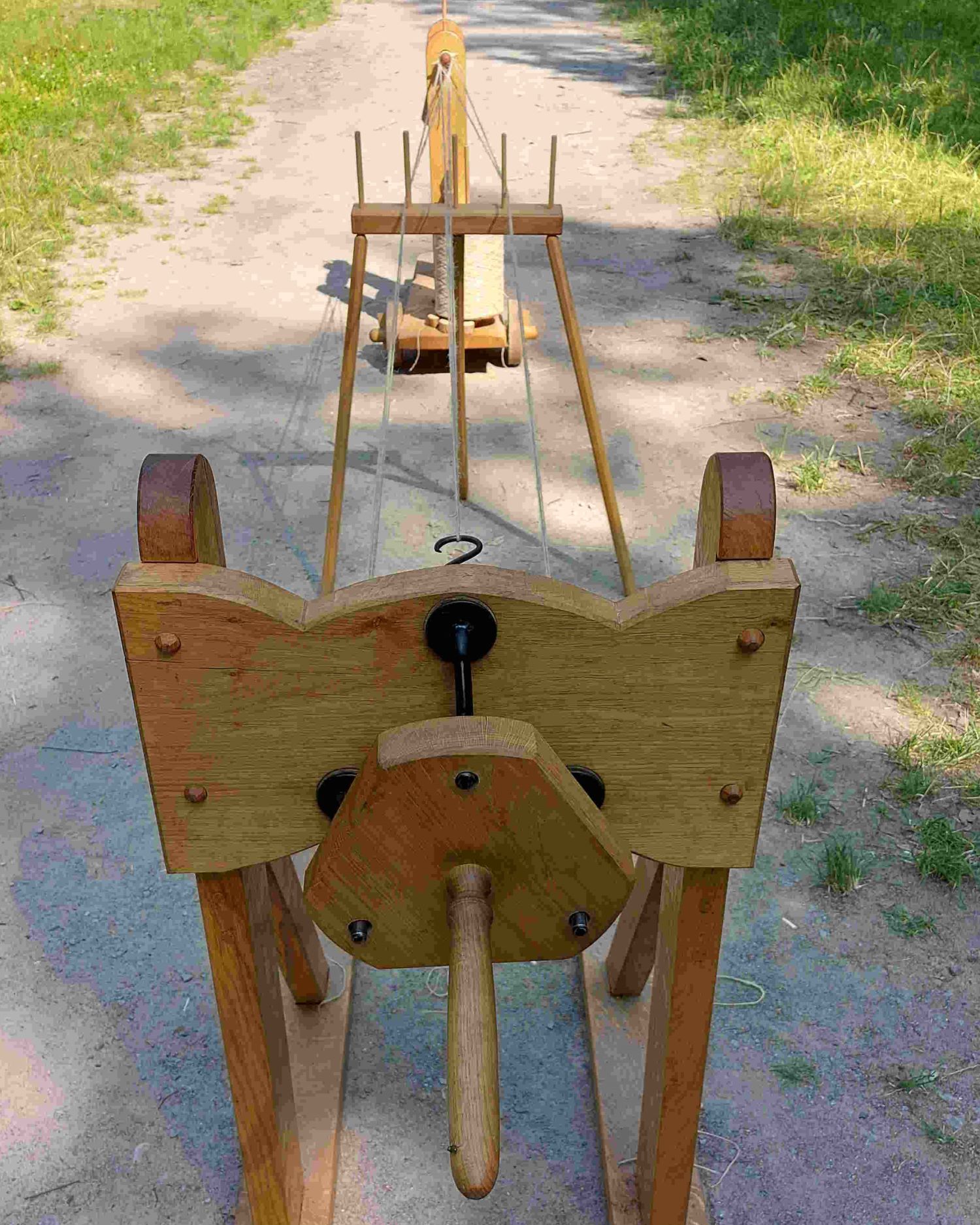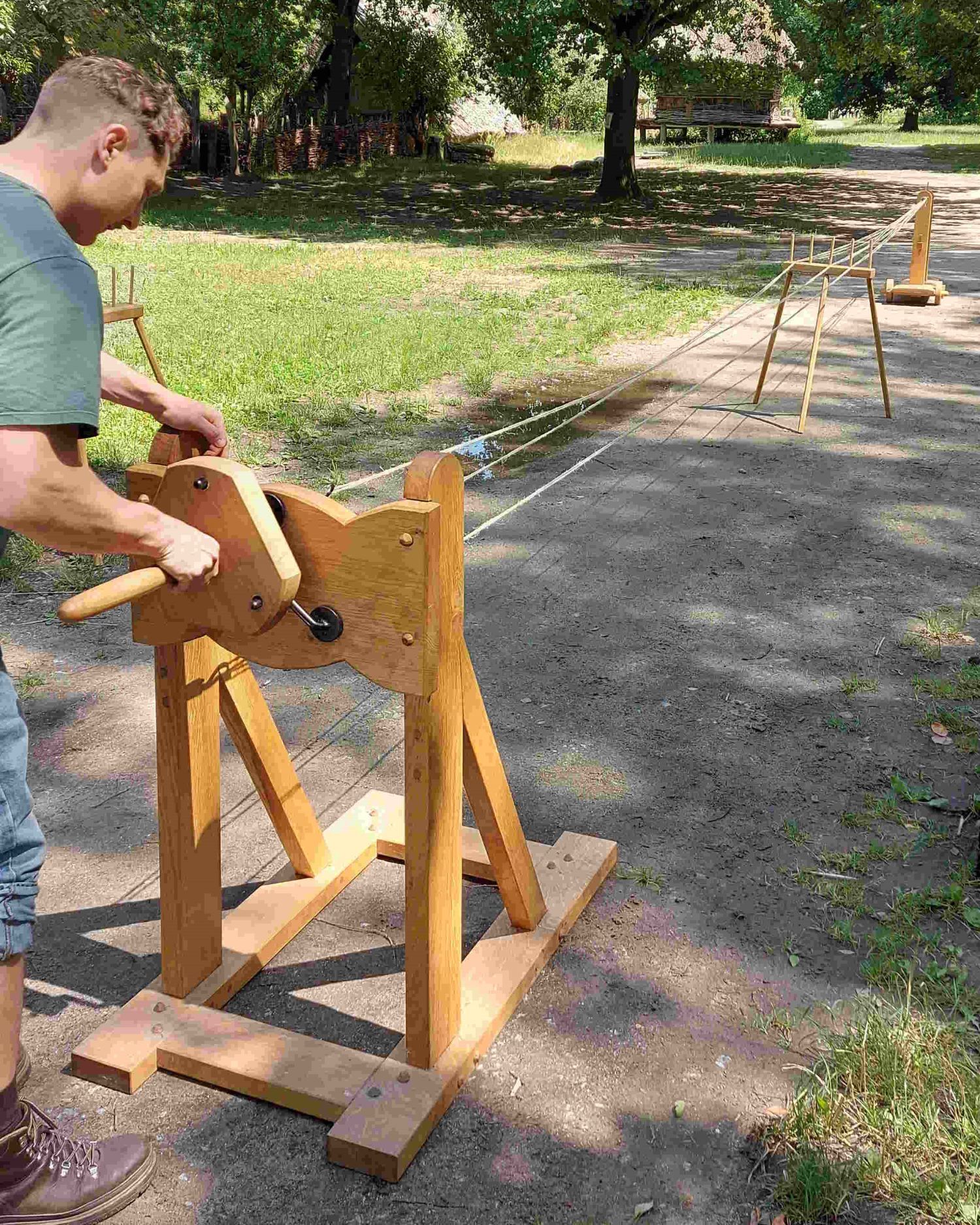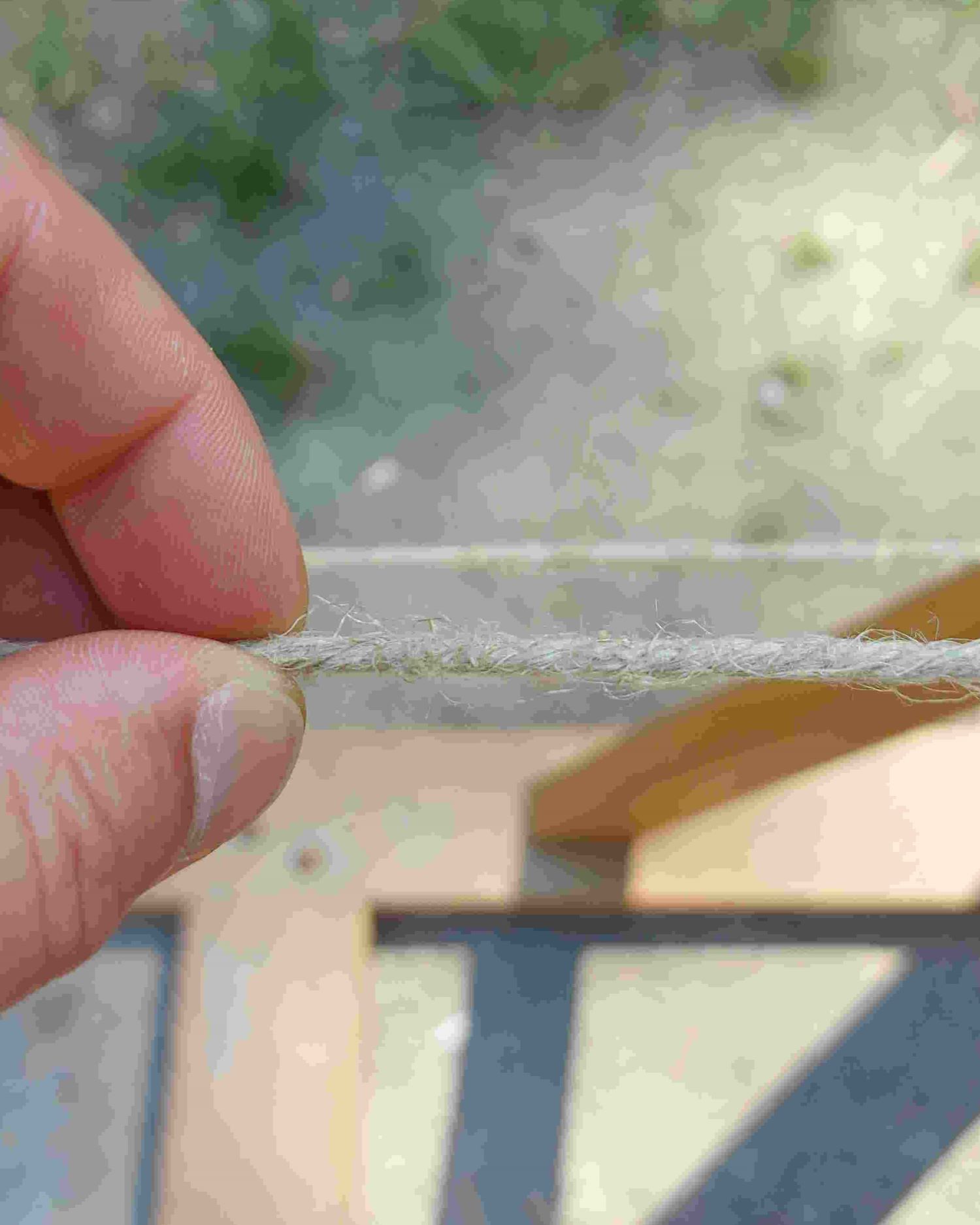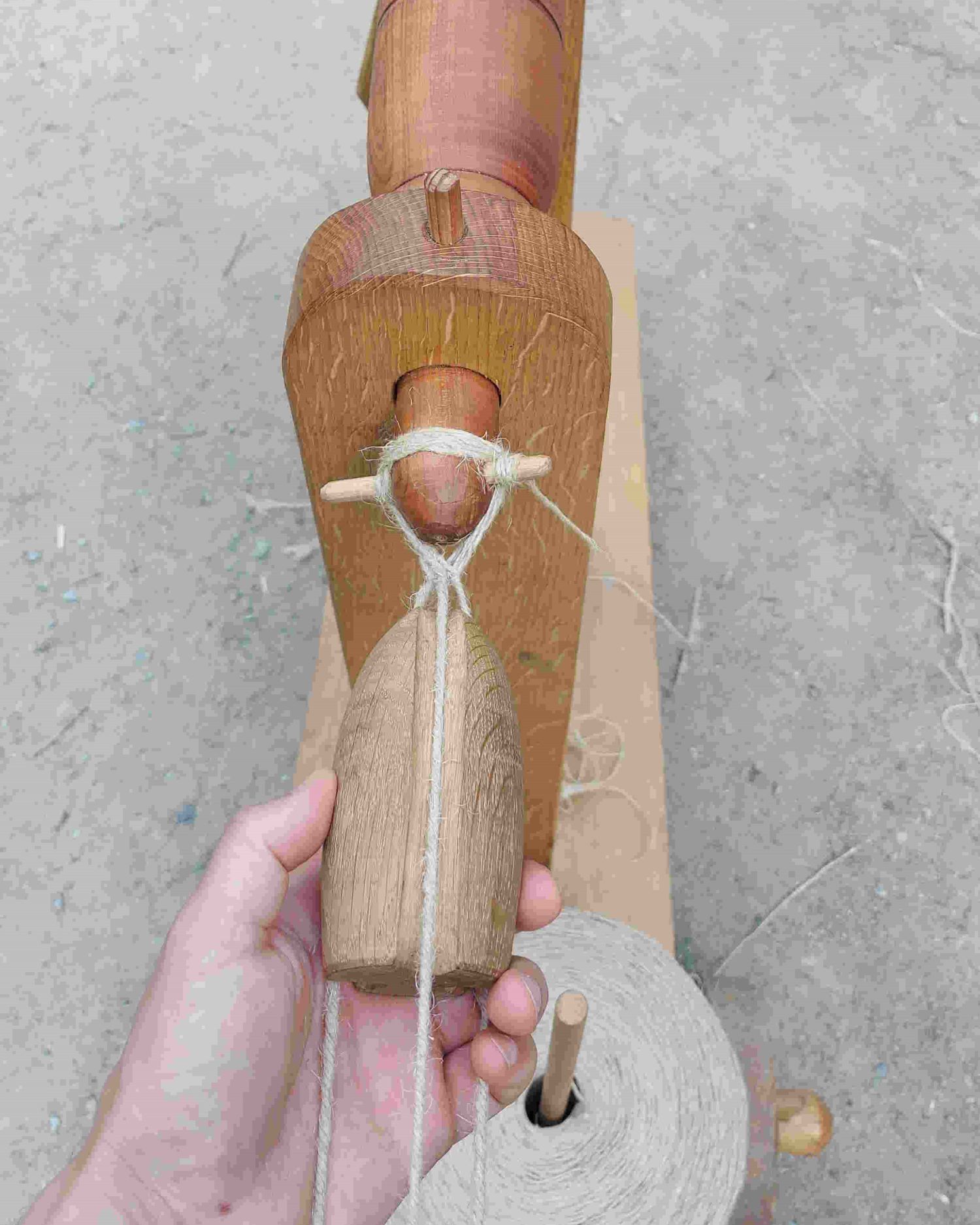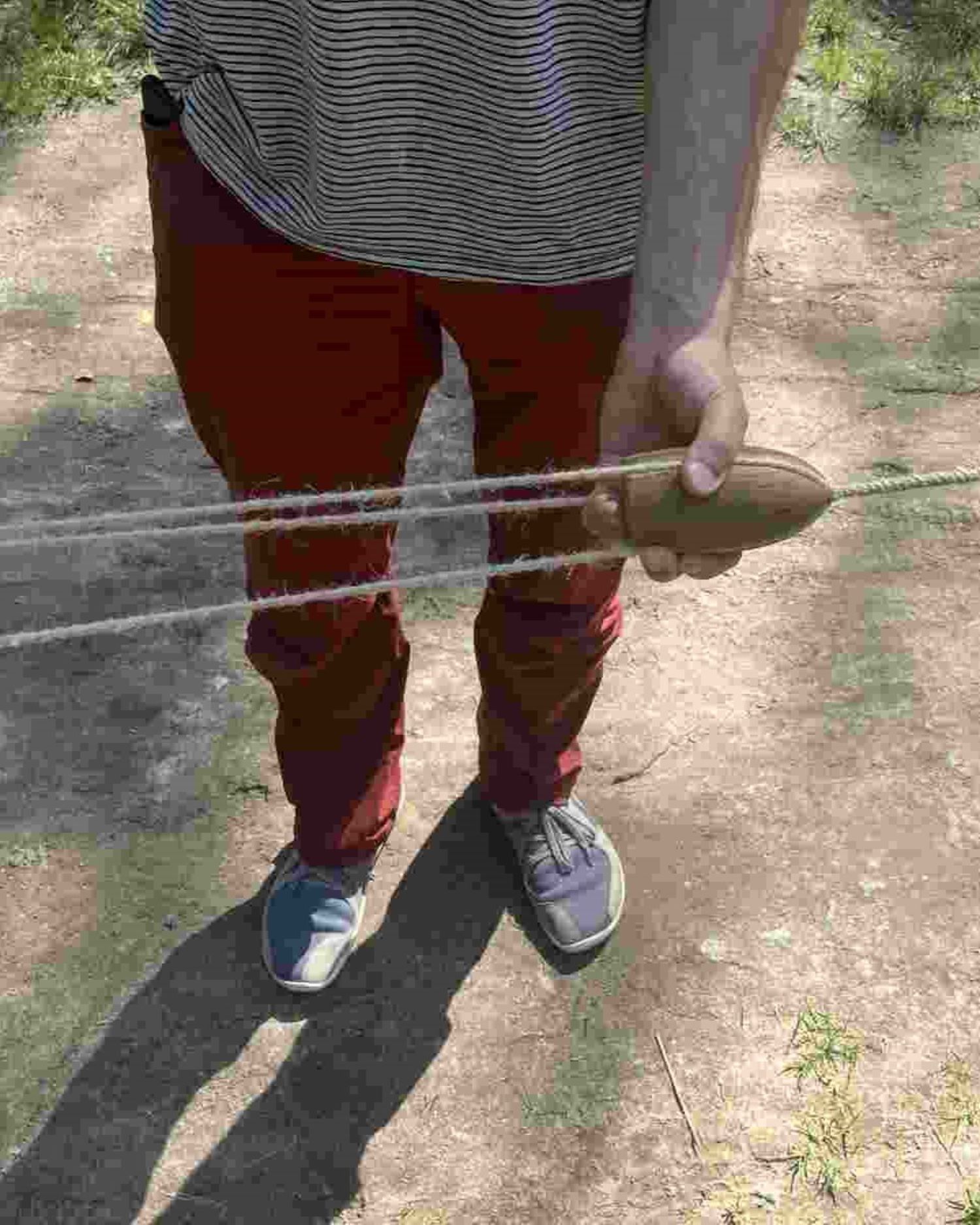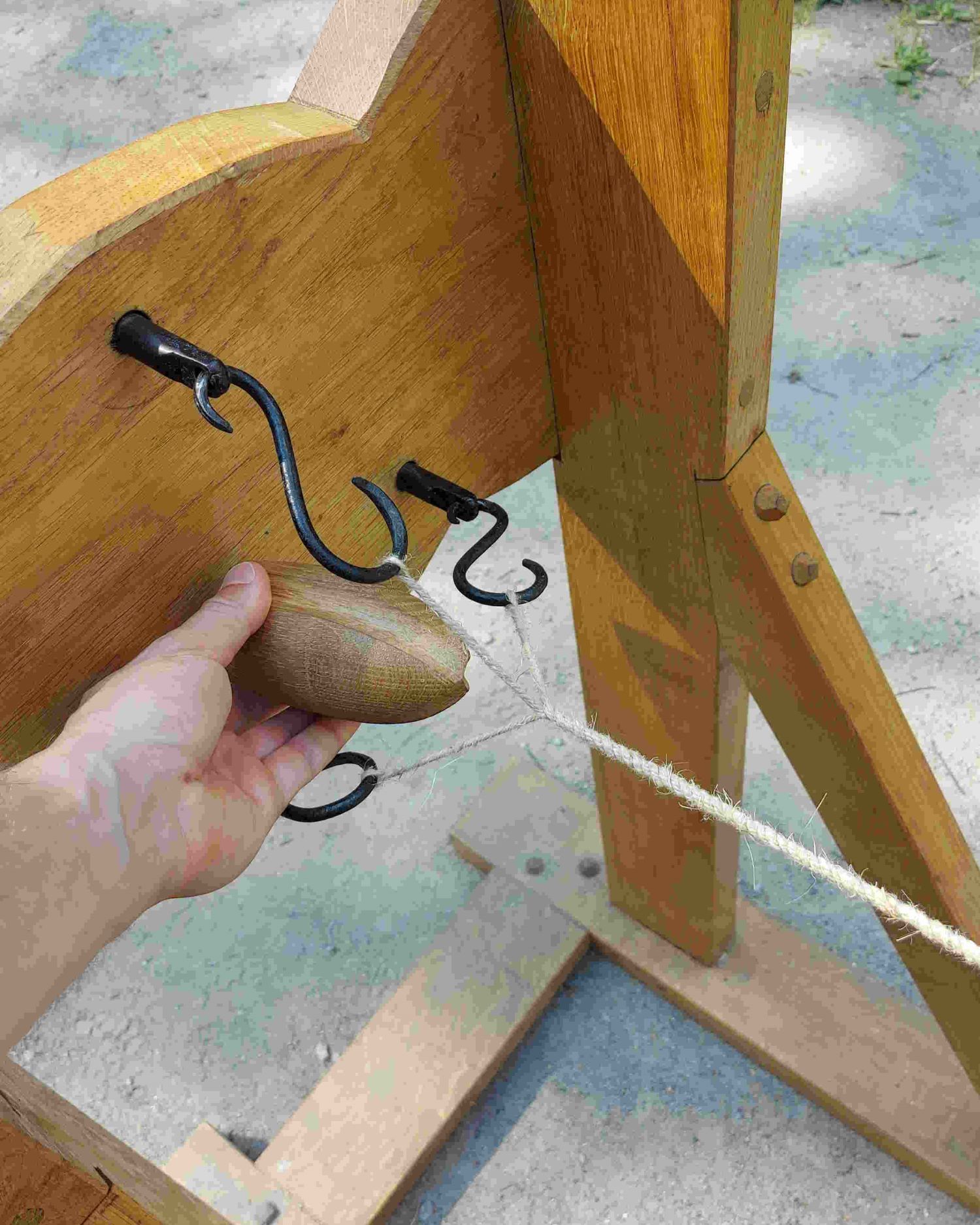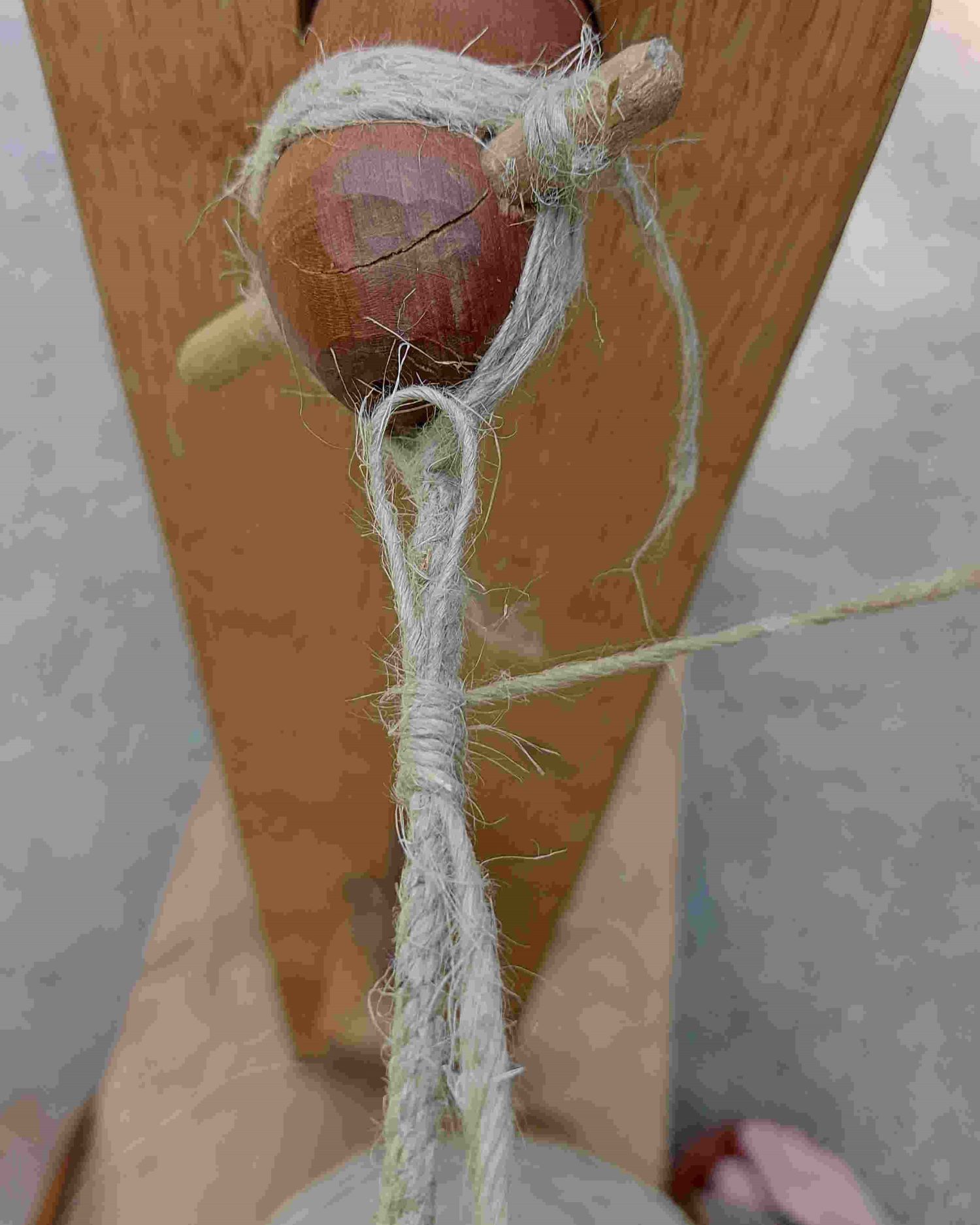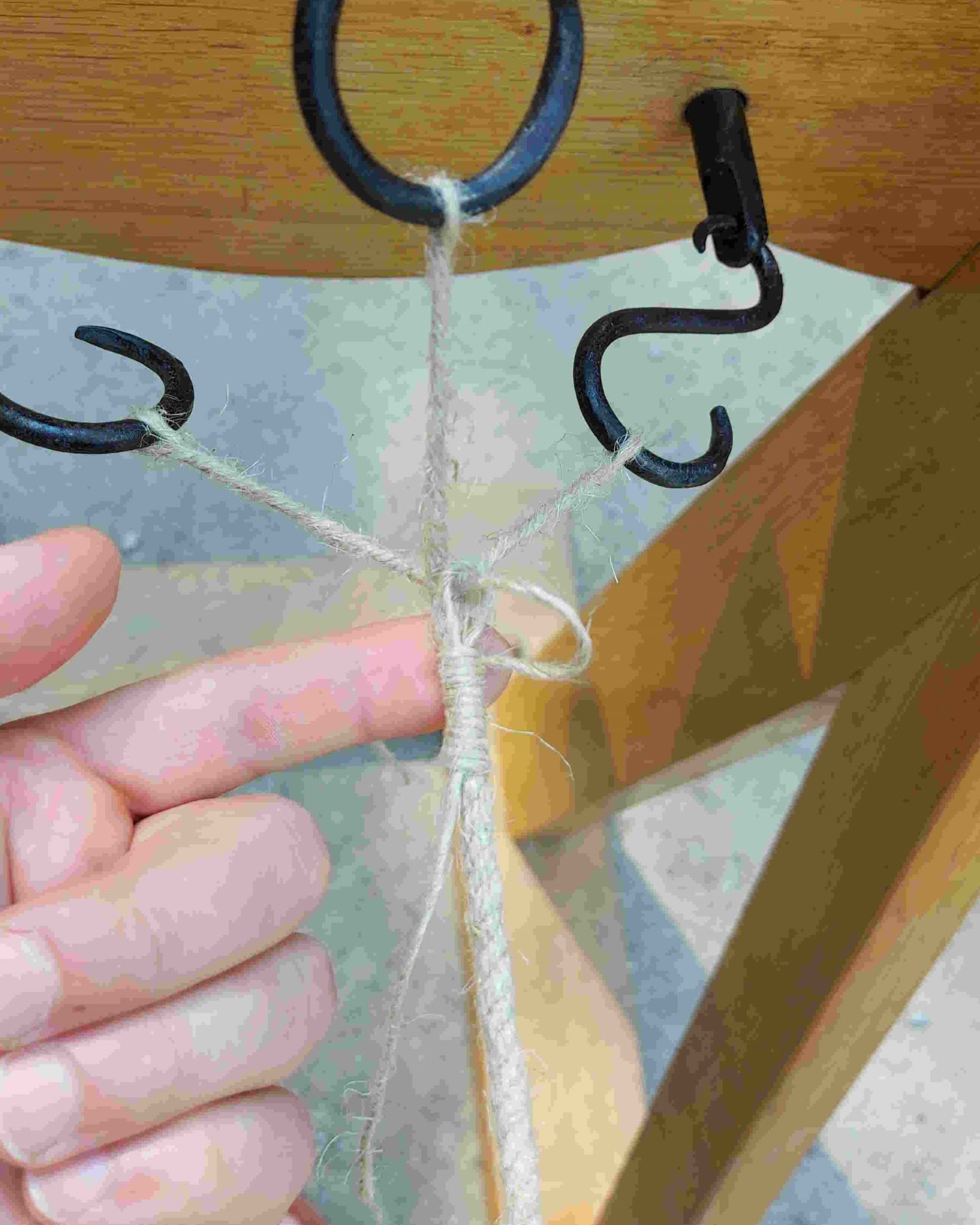Rope making at Museumsdorf Duppel (DE)
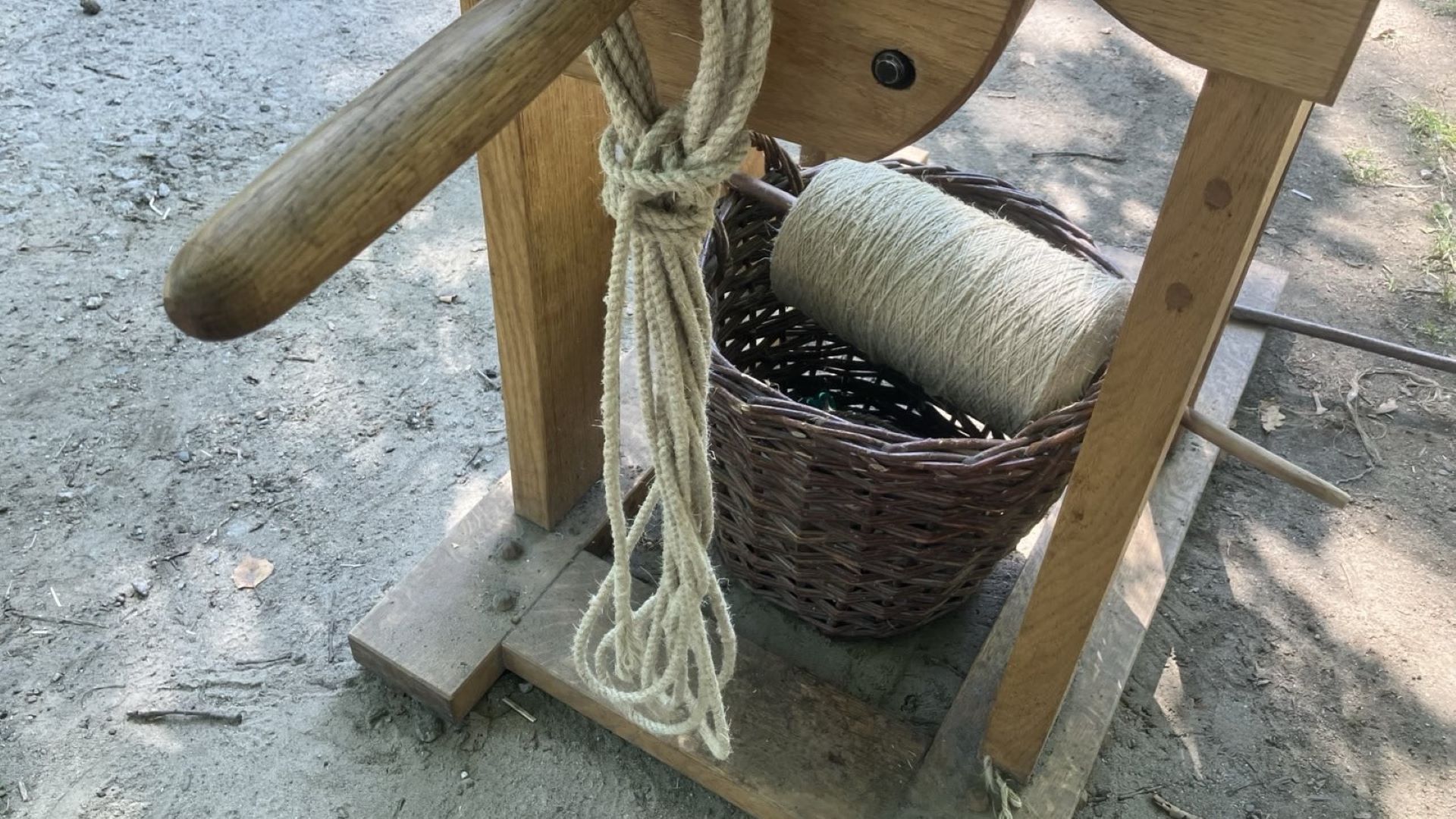
Name of the craft in English: Rope making
Name of the craft in local language: Seilherstellung
Local Language: German
Type of craft:
Traditional (craft is still practised), Historical (craft is no longer widely practised, mainly based on historical sources)
Category of craft: Wood and furniture crafts, Other (Building)
Short description of the craft:
Rope making can be done using different techniques. The goal is to produce a steady rope made of yarn using twisting motions.
What is the historical /archaeological time period of the original craft:
High Middle Ages, Late Middle Ages, Newer Era, 1930-1950, Newest Era
What years was/is the craft practiced: 1200 AD - 2024 AD
Primary crafter: Sebastian Bayer (DE)
Crafter's role in the documentation process: Demonstrator (storyteller)
The crafter has been practicing this craft for: 0-5 years
Is practicing this craft the main occupation of the crafter: No
What is the main occupation of this crafter: Student, Museum Guide
Does the crafter practice any other crafts: Yes
Other crafts: Wood working techniques like wood turning, hewing, carving
The crafter's motivation for learning this specific craft:
Personal interest, Learning something new, Developing the skillset (a sense of achievement), Manual working, Producing (unique) things, Doing something useful
Does the crafter have regular contact with colleagues: Yes
Number of colleagues: 4
Which describes the crafter's habitual working area best: Museum
How did the crafter learn this craft:
From one or more persons (informal)
Please provide the context:
The craftsman took part in a workshop organized by Jörg Nadler.
Does the crafter teach this craft: Yes
Where / how the crafter teaches: The crafter teaches one or more persons (informal)
This process is: To produce something from scratch
Which of these options best describes the work area during this craft activity: Museum
Name each working technique (keyword):
• clamp • twist • polish • knot
Phase 1
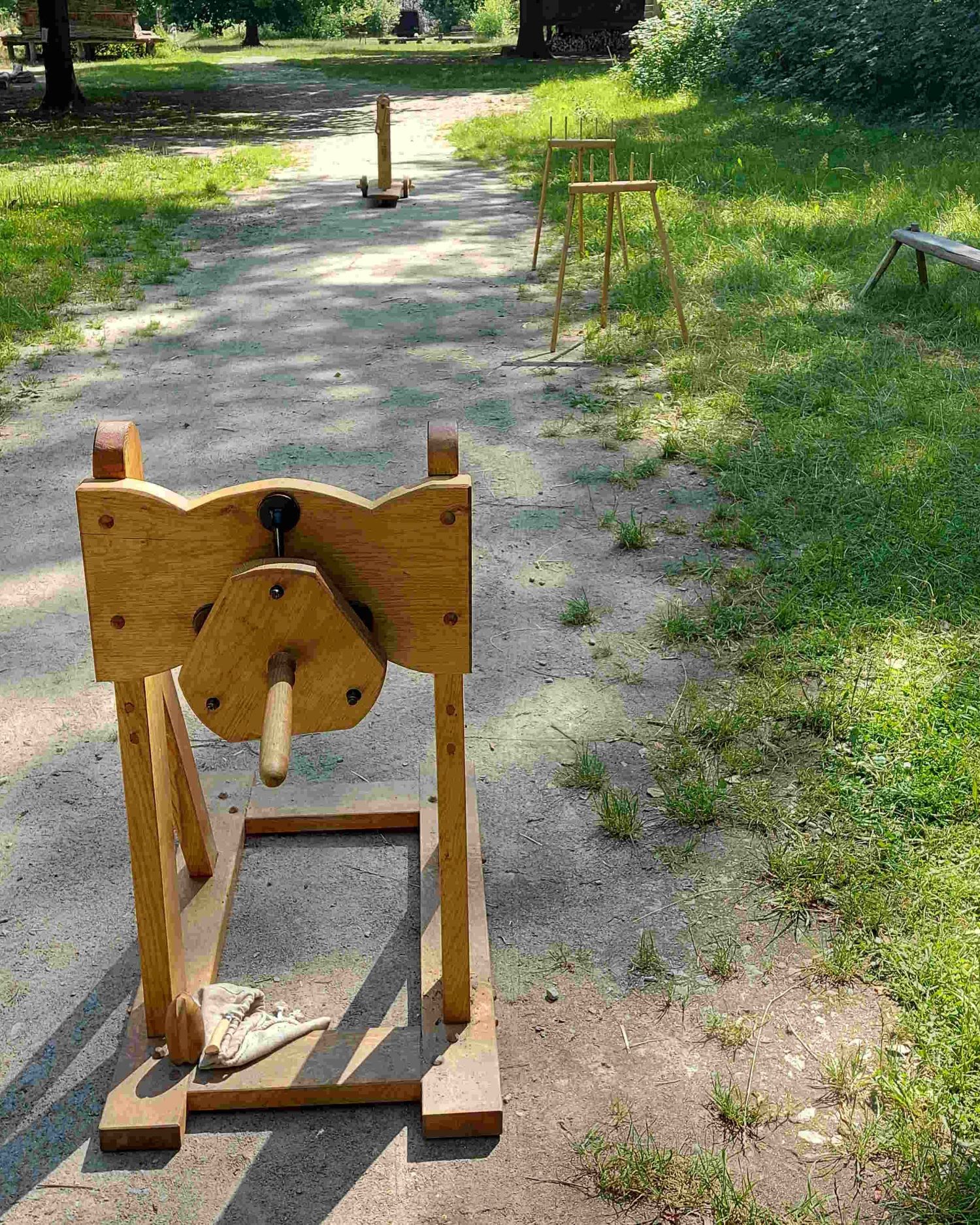
Number and name of the phase:
1. Assembly
Description of this phase:
The trestle with hooks and the car must be assembled and positioned at the desired distance from each other. The distance between the trestles determines the length of the finished rope. The leading trestle is placed next to it for later use.
Time: 5 min
Tools used in this phase:
No
Installations used in this phase:
Trestle with hooks, Leading trestle, Car
Materials used in this phase:
No
Phase 2
Number and name of the phase:
2. Attaching the yarn
Description of this phase:
The hemp yarn is fastened to the crank of the car and from there is tensioned to one of the hooks of the facing trestle. The yarn is now passed back and forth between these two hooks until the desired number (the amount of yarn used here determines the thickness of the rope) is reached. The process is then repeated with the other two hooks, and finally the yarn is fastened to the car again. It is important to make sure that all the threads are tensioned with the same force so that no individual threads sag. Now place the guide block (several can be used for long ropes) in the middle of the track and sort the threads over it so that they cannot become tangled in the next step.
Time: 5-10 min
Tools used in this phase:
No
Installations used in this phase:
Trestle with hooks, Leading trestle, Car
Materials used in this phase:
Hemp yarn
Phase 3
Number and name of the phase:
3. Twisting the strands
Description of this phase:
The three strands are now rotated independently of each other in a clockwise direction to create cords. This is being done by using the crank handle to turn the hooks of the trestle. During this time, it is important to check the tension of the cords to achieve the desired tightness.
Time: 15-20 min
Tools used in this phase:
No
Installations used in this phase:
No
Materials used in this phase:
No
Phase 4
Number and name of the phase:
4. Twisting the cords
Description of this phase:
Three people are needed in this phase: One person continues to slowly turn the hooks of the trestle in a clockwise direction, while another person turns the crank of the car in an anti-clockwise direction. Another person uses the leading wood and, starting from the car, guides it between the cords and exerts slight resistance in the direction of the car. In this way, the cords are twisted together in a controlled manner while the car slowly moves towards the trestle.
Time: 7-8 min
Tools used in this phase:
Leadwood
Installations used in this phase:
No
Materials used in this phase:
No
Phase 5
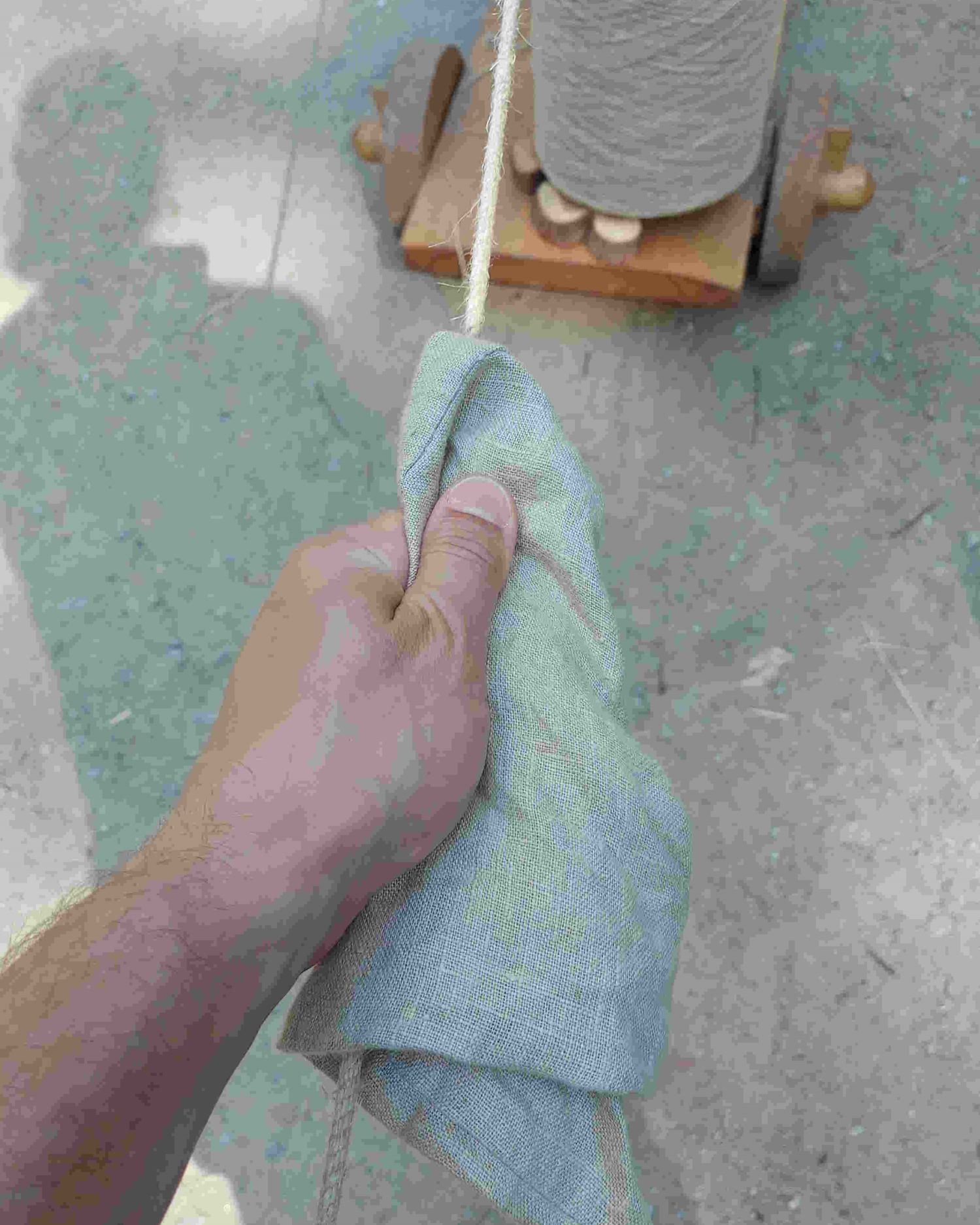
Number and name of the phase:
5. Polishing
Description of this phase:
A cloth or a piece of leather in one hand, is being run along the rope to remove protruding threads or to felt them with the rope.
Time: 5 min
Phase 6
Number and name of the phase:
2. Knotting and detaching
Description of this phase:
There are various methods to secure the ends of the ropes, in this case they are knotted with another piece of hemp yarn. The rope can then be removed from the hooks on the trestle and cut off the car.
Time: 5 min
Does the crafter model this craft activity on historical or archaeological sources (is the product an exact replica of a specific object): No
Did the crafter diverge from historical/archaeological accuracy to adapt the process: Yes
Describe any changes to tools, materials and processes:
The threads used were not spun by hand. The rope is shorter and thinner than ropes crafted traditionally.
Describe the crafter's reasons for these changes:
Producing hemp yarn is very difficult and time consuming. For demonstrating purposes a rope can be shorter than for practical use.
Has the crafter developed new techniques or improved the activity over time: Yes
Describe changes to the craft activity:
The polishing of the rope in the fifth step is technique which was added later.
Describe changes to the final product or outcome:
The product appears shinier and is nicer to touch.
Describe the reasons for these changes:
To improve the product
Has the crafter identified any gaps in their knowledge or experience: Yes
Describe what the crafter would like to learn about the archaeological/historical backgrounds for the craft activity:
The crafter would like to know more about archaeological rope finds and about early methods of producing them.
Describe what the crafter would like to learn about the practical craft activity:
The relationship between the tensions in the rope and the changes in the product that go hand in hand with this are topics that the crafter would like to learn more about.
Please describe the motivation:
Personal interest and improving the ropes
Describe the crafter's approach to a tidy workshop, hygiene and other best practices:
The installations must be kept clean, intact and functioning. Some processes have been improved, like placing the yarn bobbin in a way that it can unwind automatically when pulled. This way, it doesn't have to be moved and carried.
Describe the crafter's approach to clean-up and disposal of waste products:
The only waste products are leftover pieces of yarn, these get collected for future use.
Describe any by-products of the craft activity that could have further use:
The yarn pieces can be used in varios ways, depending on their lengh and condition: To make the knots at the ends of new ropes, as a wick for oil lamps, as stuffing for fabric products such as pillows, for sealing buckets, for mending ropes and many more.
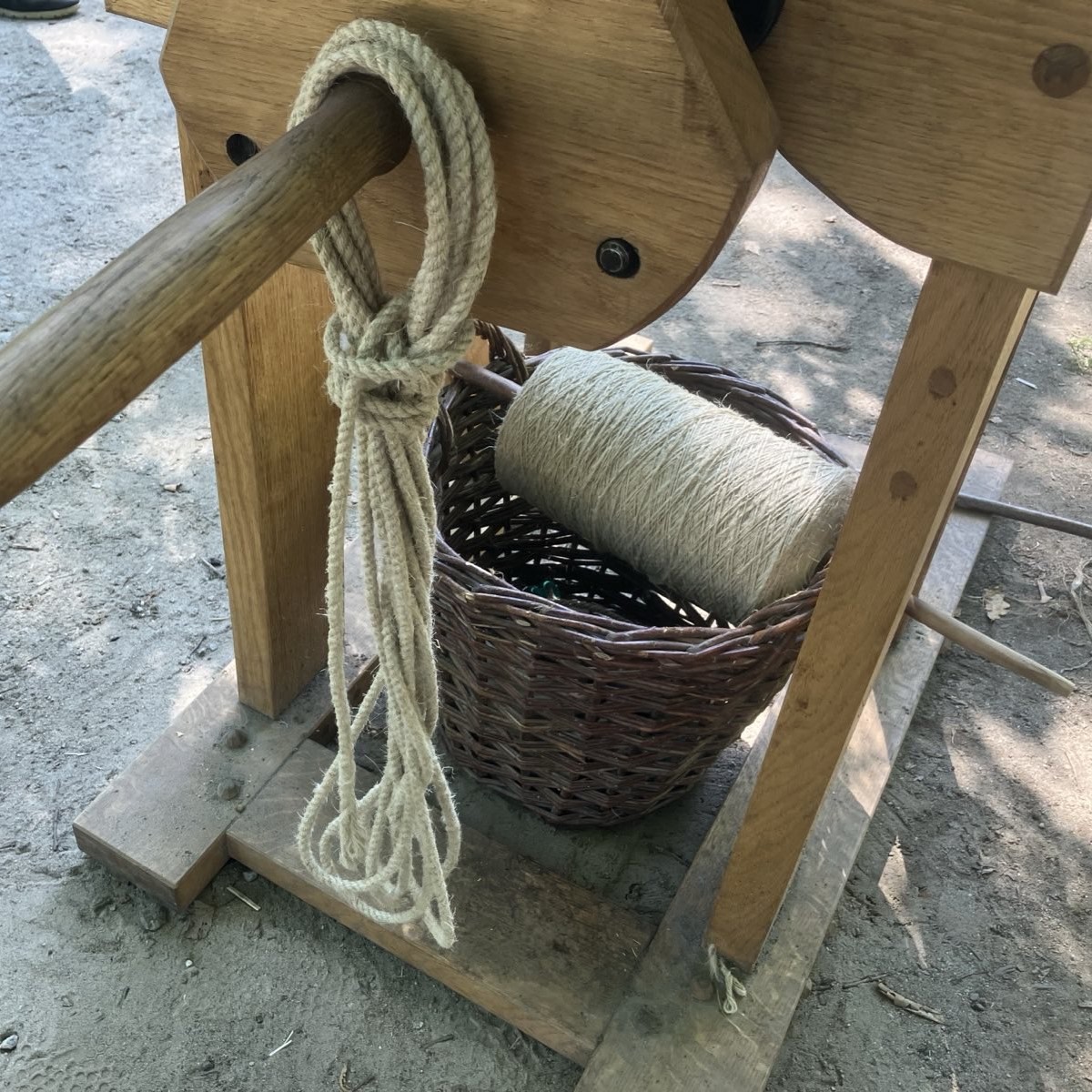
A rope is a very versatile product. It can be used in fields such as construction, living history, leisure and many more. It is flexible but hard-wearing and can be made in any thickness and length. Depending on demand, availability and preference, different yarns can be processed into a rope and thus further change its properties.
Name of the product in English: Rope
Name of the product in local language: Seil
Describe the product:
A rope is a very versatile product. It can be used in fields such as construction, living history, leisure and many more. It is flexible but hard-wearing and can be made in any thickness and length. Depending on demand, availability and preference, different yarns can be processed into a rope and thus further change its properties.
What are the outcome or product's purposes:
Practical use, Educational purposes
Describe how the product or outcome is used:
Ropes can be used in many different ways, in this case the rope is used as a skipping rope.
Describe who typically uses the product or outcome:
Ropes can be used by anyone, in this case especially by children who visit the museum.
In which context is the product or outcome typically used:
Various
What happens with the product or outcome? Is it distributed and how:
Donation/Gifting


